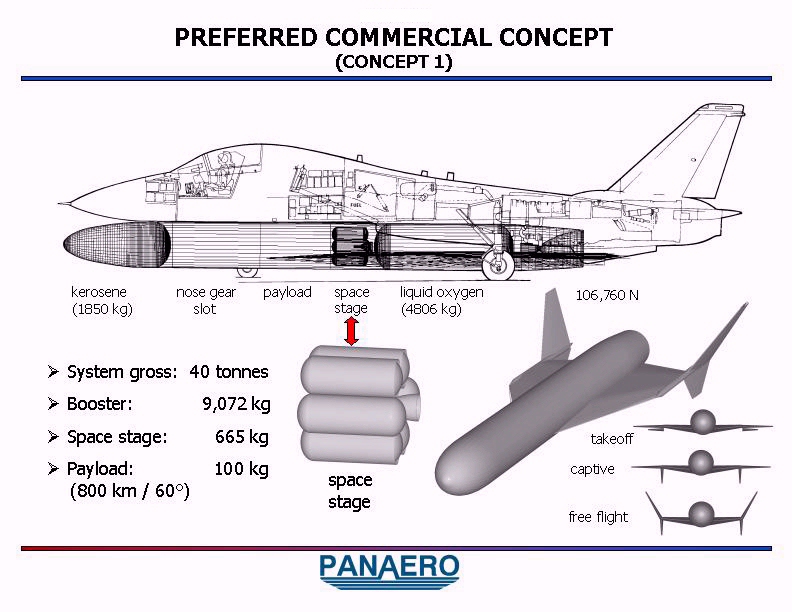Given the recent interest in using jet fighters as launch platforms, it’s interesting to look at some past proposals.
The late Len Cormier was an old-school aerospace engineer who became involved with space just prior to Sputnik. He was also a good friend who never tired of regaling us with tales of dating Marilyn Monroe. Len worked for North American Aviation, which later became part of Rockwell International, and was involved in some of the design studies that led to the Rockwell Space Shuttle. He became convinced that the Space Shuttle would never live up to the economic benefits which Rockwell and NASA claimed for it – it was too large, too expensive, and too complex, in his view – and left to form his own company (PanAero, Inc.) to pursue his own designs. Len continued working up until his death in 2008, always championing vehicles which were small, simple, and designed to minimize development costs.
Len’s primary interest was vehicles that could carry humans to orbit (such as the Space Van) but he also worked on suborbital rockets and satellite launchers. One of his later designs was a concept to launch a 100-kilogram (220-lb) satellite from an F-14A Tomcat. The US Navy fighter was an appropriate choice for Len, who flew fighters off a Navy carrier during World War II, but it was made for sound engineering reasons. Len believed the design of the F-14 was better suited for carrying underslung payloads than other aircraft such as the F-15 Eagle. In addition, F-14 airframes were readily available (at least to the US government). The Navy was in the process of retiring F-14s from active service and good-quality airframes were filling government boneyards. Unfortunately, Len ran into some difficulty persuading the government to sell recently retired military aircraft to a civilian company.
Premier Space Systems is currently considering a similar concept for their future orbital system. PSS would use an F-15A or B model rather than the F-14.


Don’t forget about “Ishim”: a joint Russian (MIT) and Kazakh project, using the ASAT MiG-31 which ended in Kazakhstan after the break-up of USSR.
Why we are not thinking about alternative source of rocket fuel (Liquid Oxygen and Hydarzine etc.)gravitational pull reaction catapult system may work in this context? energy from Hyper velocity stars also may be exploted. Hyper velocity stars are releasing tremendous amount of gamma and other cosmic rdaiation.
Umesh